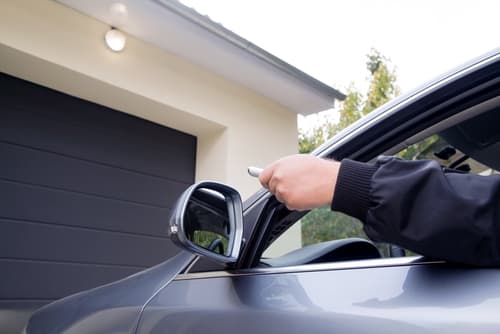Proper garage door sensor alignment is crucial for the safe and efficient operation of your garage door system. Misaligned sensors can lead to malfunctions, posing safety risks and causing inconvenience. This comprehensive guide will delve into the importance of sensor alignment, common issues arising from misalignment, and step-by-step instructions to correct and maintain proper alignment.
Understanding Garage Door Sensors
Garage door sensors are safety devices installed near the bottom of the door tracks on both sides. They emit and receive infrared beams to detect obstructions in the door’s path. When the sensors are properly aligned, the door operates smoothly, reversing if an object interrupts the beam. Misalignment disrupts this function, leading to operational issues.
Common Signs of Misaligned Sensors
Identifying misaligned sensors early can prevent further complications. Look for these indicators:
- Door Reversal: The door begins to close but reverses before touching the ground.
- Non-Responsive Door: The door refuses to close using the remote or wall switch.
- Flashing Sensor Lights: Indicator lights on the sensors blink or display error signals.
- Manual Override Required: The door only closes when holding down the wall button continuously.
Causes of Sensor Misalignment
Several factors can cause sensor misalignment:
- Physical Impact: Accidental bumps or impacts can shift sensor positions.
- Loose Mounting Brackets: Over time, brackets may loosen, causing sensors to move.
- Environmental Factors: Vibrations from nearby machinery or extreme weather conditions can affect alignment.
- Obstructions: Debris or objects near the sensors can interfere with their function.
Step-by-Step Guide to Aligning Garage Door Sensors
Follow these steps to realign your garage door sensors:
- Ensure Power Supply: Confirm that the garage door opener is connected to a power source.
- Inspect Sensor Placement: Verify that both sensors are mounted at the same height, typically 6 inches above the ground.
- Clean Sensor Lenses: Use a soft cloth to remove dust or debris from the sensor lenses.
- Check Indicator Lights: Each sensor has an indicator light. A steady light usually signifies proper alignment.
- Adjust Sensors: If the lights are not steady, gently adjust the sensors until the lights remain solid.
- Secure Mounting Brackets: Tighten any loose screws or bolts to prevent future misalignment.
- Test the Door: Operate the door to ensure it opens and closes smoothly without issues.
Preventive Maintenance Tips
Regular maintenance can help maintain sensor alignment:
- Routine Inspections: Check sensor alignment monthly.
- Keep Area Clear: Ensure no objects or debris are near the sensors.
- Protect from Elements: Shield sensors from direct sunlight or moisture, which can affect performance.
- Educate Household Members: Inform family members about the importance of avoiding contact with sensors.
When to Seek Professional Assistance
While many sensor alignment issues can be resolved independently, certain situations require professional intervention:
- Persistent Misalignment: If realignment attempts fail, there may be underlying issues.
- Damaged Sensors: Cracked or broken sensors need replacement.
- Electrical Problems: Faulty wiring or electrical issues should be handled by professionals.
Conclusion
Maintaining proper garage door sensor alignment is essential for the safety and functionality of your garage door system. Regular inspections and prompt corrections can prevent potential hazards and ensure smooth operation. For expert assistance, Radford Garage Doors & Gates offers professional services to keep your garage door system in optimal condition.


Leave a Reply